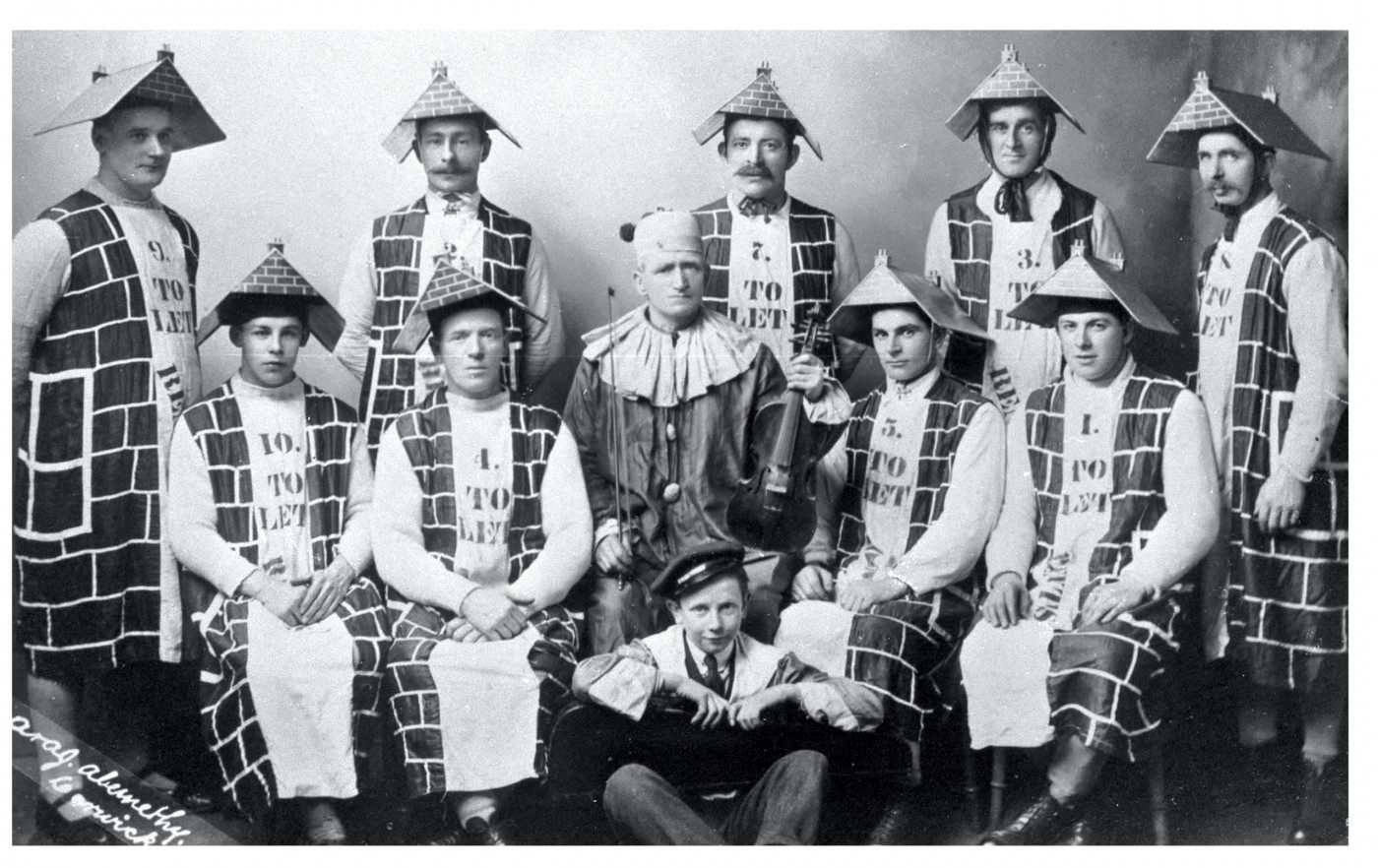- youtube
- bluesky
- Home
- About
- Costume Journal
- Membership
- Conference & Events
- Grants & Awards
- News & Social
In this blog Verity Wilson, a former editor of our journal Costume, tells us how she came to write her latest book Dressing Up: A History of Fancy Dress in Britain (Reaktion, Autumn, 2022).
Though I would only ever dress up under extreme duress, I am a fervent advocate of fancy dress. I thoroughly admire those who have the chutzpah to wear it unblushingly which perhaps is the reason I so much enjoyed writing Dressing Up: A History of Fancy Dress in Britain. The book took me far too long to write and then the pandemic added to the delay but I was never once bored by the experience. Legions of costumed characters paraded across my desk as I browsed through thousands of images and scrutinized page after page of newspaper articles reporting on the phenomenon.
The practice of dressing up was widespread. People from all walks of life embraced it, spurred on by advances in technology that helped spread both the clothes themselves and knowledge about them. But, perhaps most relevant of all, in the period covered by the book - from the beginning of Queen Victoria’s reign to the coronation of Queen Elizabeth II - fancy dress’s popularity was concurrent with photography’s trajectory, from its invention in 1839 to its increasing sophistication in the ensuing decades. Today, our understanding of earlier fancy dress is transmitted primarily through photographic images rather than figurative language.
And it was early photography that first led me to consider fancy dress as a topic for serious scrutiny. In the early 2000s, a wonderful album containing 50 endearing portraits of costumed children was up for auction at Sotheby’s in South Kensington just at the time I happened to be viewing Chinese dress there on behalf of my own institution, the Victoria and Albert Museum. I have completely forgotten what the Chinese items were but the Victorian children in their finery resonated with me long afterwards. Thanks to the album’s later purchase by the Metropolitan Museum of Art in New York, I now know that the children wore these fancy dress outfits to the 1873 Exeter Juvenile Ball, a distinctive genre of civic function widespread in London and provincial cities until well after the First World War. The Exeter children fed into my already growing awareness of the often unmindful delights of fancy dress; British people dressed up as ‘Chinese’ with scant thought for the ethical niceties of appropriation, and I wanted to try and understand the history of this pervasive costume craze.
Playing the part of someone you could probably never be in real life is what dressing up is all about. A person in fancy dress is by default ‘on display’, sometimes spectacularly so, and being seen in costume was an essential corollary to donning it. When skating jamborees, bicycle parades and street carnivals took off at the end of the nineteenth century, fancy dress was on very public show as never before. While many dressed as proven favourites - Little Bo Peep, Pierrot, Dutch girls, Native Americans, cowboys, Japanese – some were topical for the time, referencing branded products or local concerns and controversies.
Dressing Up in all its many different manifestations was a crucial ingredient of peoples’ lives in Britain and its overseas empire. My book is a celebration of this practice but it also engages with the troubling and contentious aspects of fancy dress with its transgressive crossings of class, gender and racial boundaries.
Verity Wilson worked at the Victoria and Albert Museum in London for 25 years. She co-edited Costume from 2009 to 2014.
Image gallery

1. Harriet Follett dressed as ‘ La Figlia de Reggimento’ (The Daughter of the Regiment) for the Exeter Juvenile Ball, hand-tinted photograph by Owen Angel, 1873. Metropolitan Museum of Art, New York

2. Miss Pickard as Empress Theodora of Byzantium and Mr Cawrse as a Musketeer at a roller carnival, Holland Park Skating Rink, London, 1884. Author’s Collection

3. George Johnson as the ‘Striding Man’, the brand image of Johnnie Walker whisky, Shanghai, c. 1925. The Special Collections of the University of Bristol Library

4. ‘Council Housing’ squad at Up Helly Aa Fire Festival, Lerwick, Shetland, photographed by A. Abernethy, 1920s. Shetland Museum and Archives